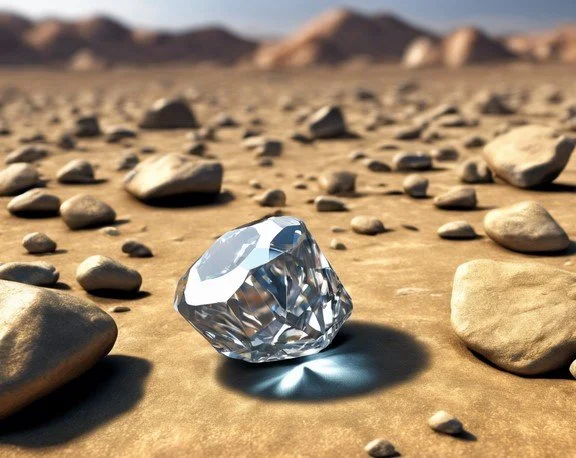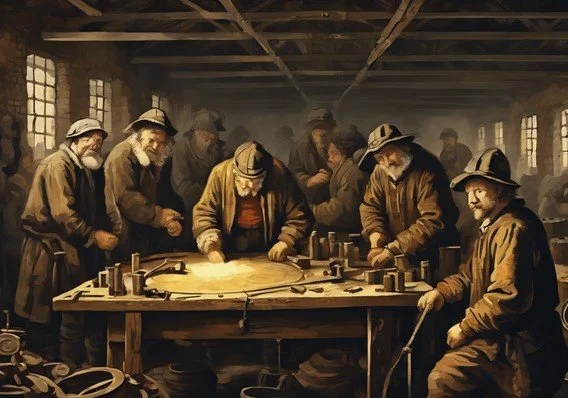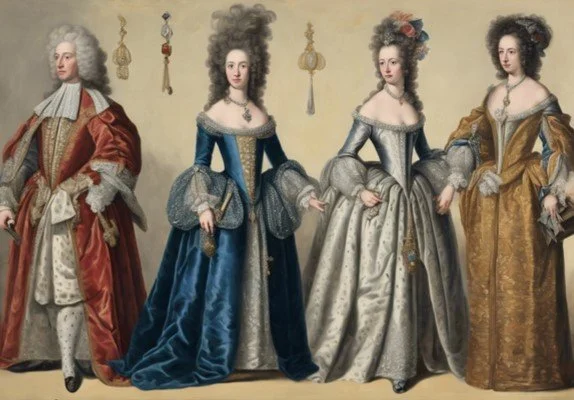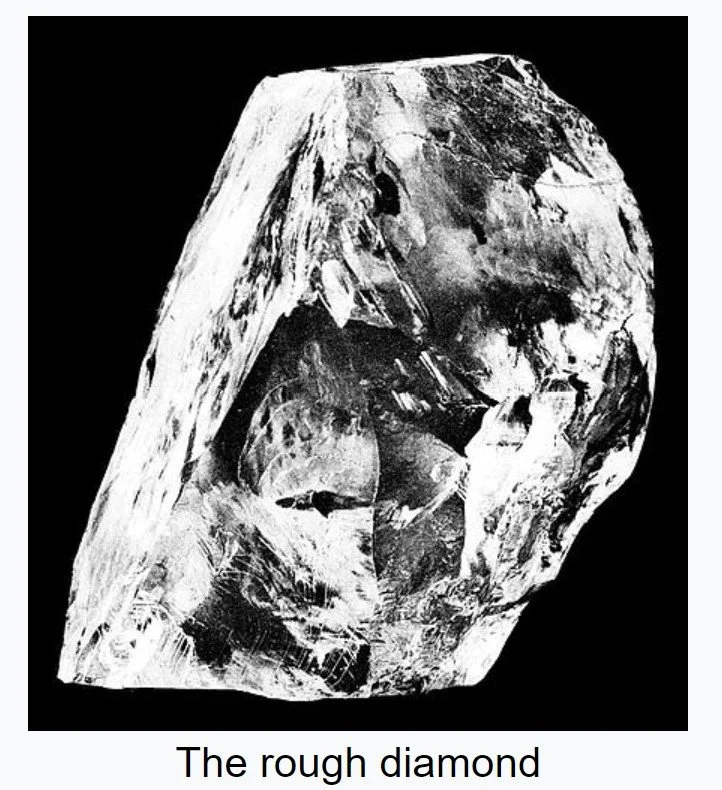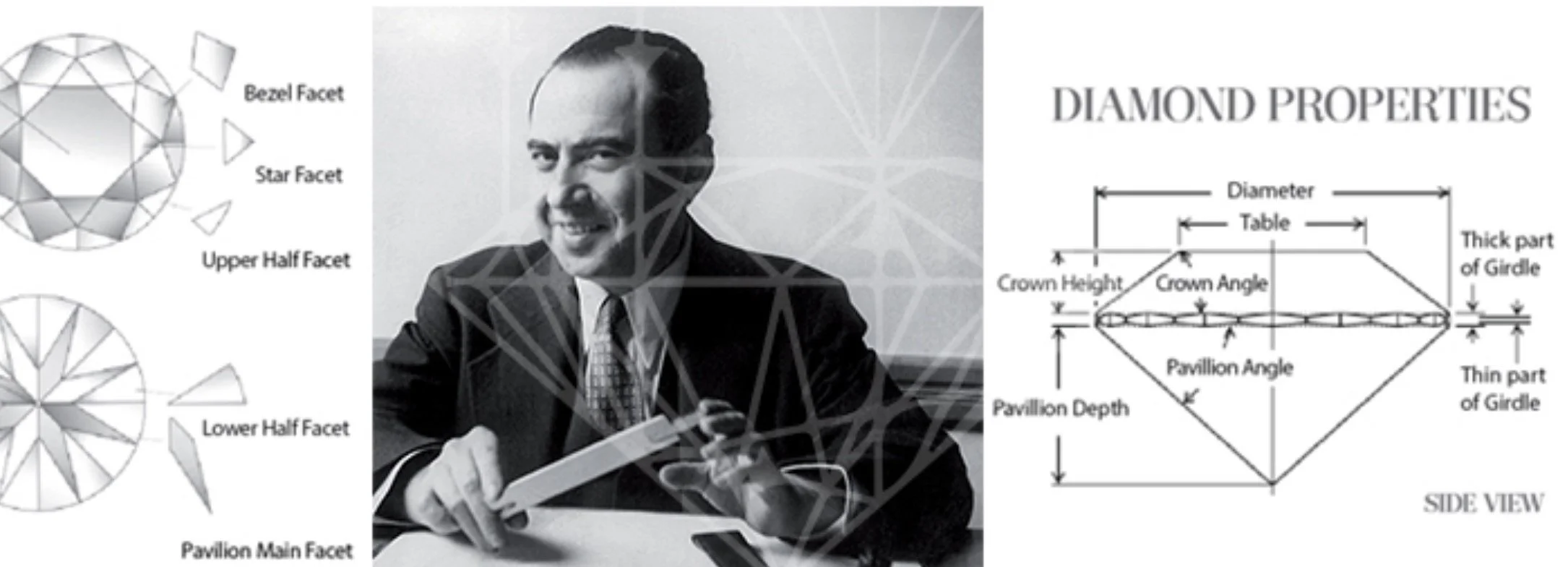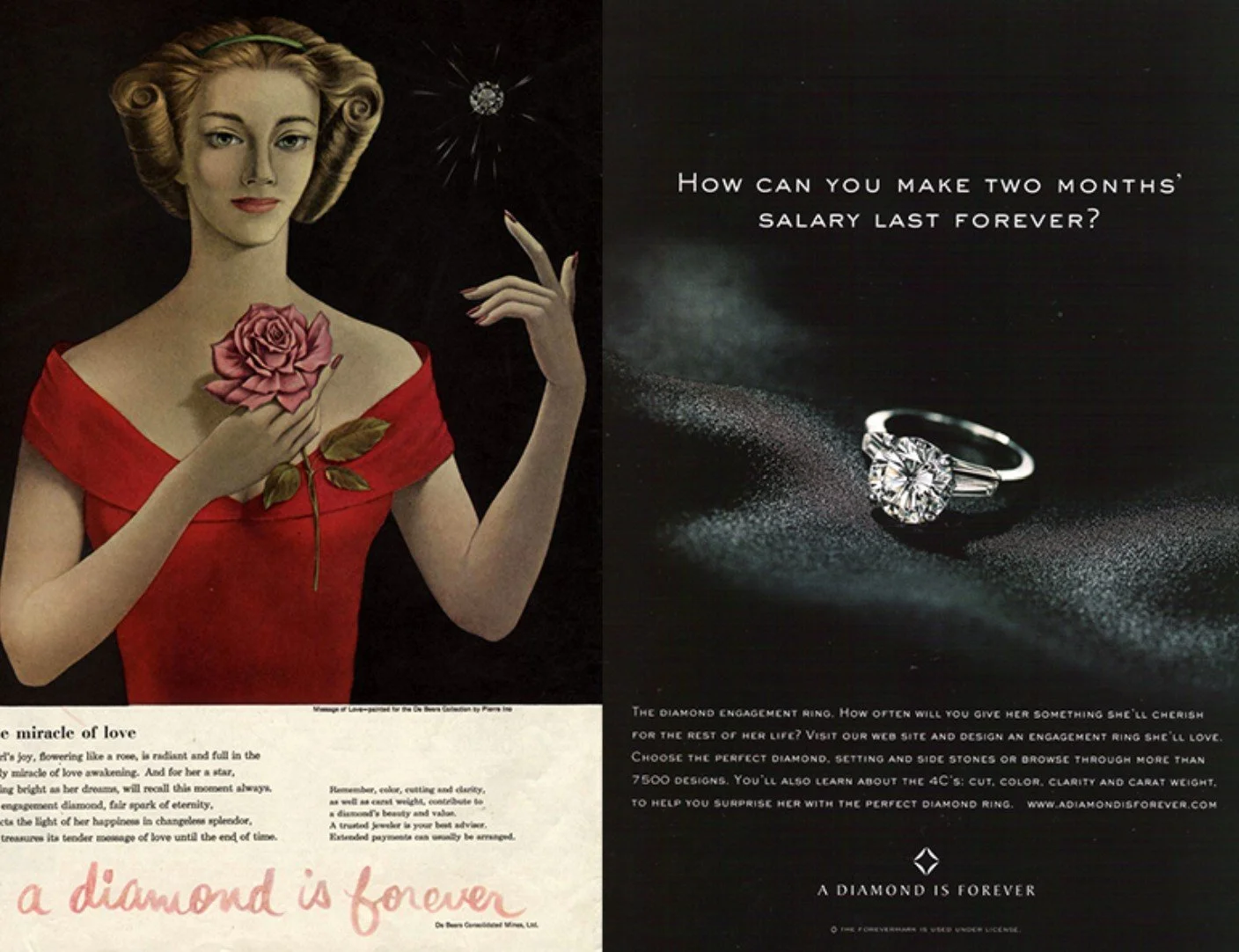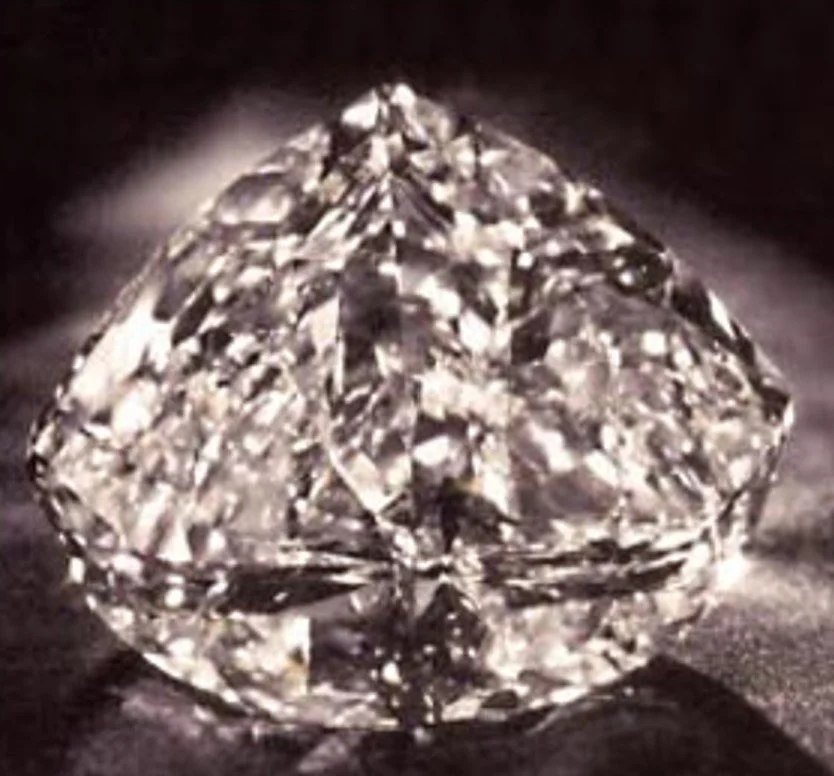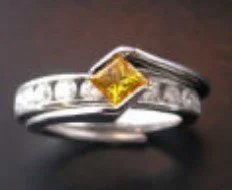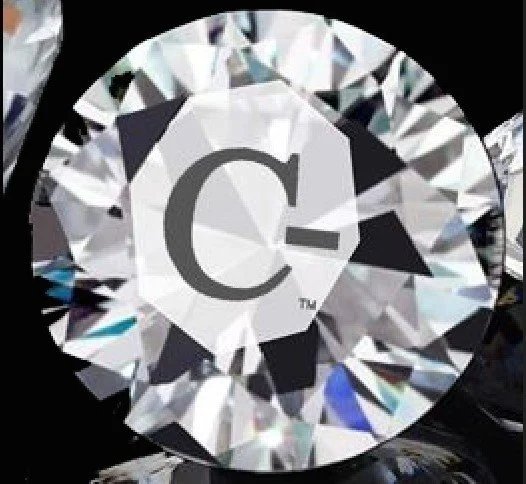THE HISTORY OF DIAMONDS
The history of diamonds begins billions of years ago. The tale is one of mystical power, beauty, wealth and spirit. The word diamond is derived from the Greek word ‘adamas’ meaning unconquerable or indestructible.
The ancient Greeks believed that diamonds were tears from the Gods. Diamonds were thought to be mystical and powerful stones that affected the heavens and the hearts. For the last 4,000 years, diamonds have held a special place in the imagination of Kings, Queens and their subjects. Since 1947 a person’s ability to save up for a diamond engagement ring provided a feeling of stability and dedication to a new marriage. Today, the newest diamond, the C-® Diamond, is made from the very carbon that if released into the atmosphere in gas form contributes to global warming, giving the wearer a feeling of hope for the future.
3.3 BILLION BC
Diamonds were formed around 3.3 billion years ago under intense heat and pressure deep within the Earth’s crust, more than 150km below the surface in a area known as the mantle which consists of volcanic magma. Diamonds are the hardest natural substance known to man. Made from pure carbon, a diamond can produce more brilliance than any other gemstone on earth.
2500 BC
First Diamond Sighting in India The first diamond discovery is believed to have occurred in India around 2500 BC as alluvial deposits along the rivers of Penner, Krishna and Godavari. Initially, these rough diamonds were not valued for their brilliance as they are today, instead these were known to be extremely hard, early tales describing it as indestructible, and were used in tools of that era. The Indian alluvial deposits were virtually the only source of diamonds for centuries yielding some world famous stones including the The Great Mogul and the Koh-i-Noor.
322 BC
Diamonds first used as decoration In 322 BC, diamonds appear in Europe as accent decoration to royalty in the form of jewellery reserved only for Kings because they stood for strength, courage and invincibility.
1330
Diamond cutting established as industry The earliest form of diamond cutting is the point cut, with eight symmetrical facets in the shape of an tetrahedron. This cut was later improved to a Table Cut, achieved by cutting off part of the top half at the Point Cut to create a table.
1477
First diamond given as an engagement ring The Archduke Maximilian of Austria proposes to his wife to be, Mary of Burgundy, with a diamond ring symbolizing his betrothal. It was worn on the 3rd finger of the right hand, against a specific vein that goes directly to the heart. Learn about the history of the first engagement ring.
1550
First Diamond Center Established The first, and most important diamond center of that period was established in Antwerp, Belgium.
1660
Diamonds worn as a symbol of wealth From 1600 – 1750 diamonds symbolized ultimate wealth and prosperity in Europe among men and woman. During that period, India was the only known source of diamonds, and Brazil followed shortly thereafter.
1867
Diamonds discovered in South Africa The story of diamonds in South Africa begins between December 1866 and February 1867 when 15-year-old Erasmus Jacobs found a transparent rock on his father’s farm, on the south bank of the Orange River. It was this discovery that led to the boom of the diamond industry and attracted tradesmen from a far. The further discovery of diamonds near Hopetown, Kimberly gave birth to the modern diamond industry and radically affected not only the world’s supply of diamonds, but also the conception of them. The 1870s and 1880s brought a mad rush for diamonds in the Northern Cape, encompassing the mines that produced 95% of the worlds’ diamonds. As annual world diamond production increased more than 10 fold during the next 10 years, a once extremely rare gem became more accessible. Many people who lived and worked in mining areas in Southern Africa experienced the unjust conditions of Apartheid and worked under abusive conditions. Today South Africa remains a leading diamond producer, her people free, and working to recover from a challenging legacy. Initiatives to improve conditions and help miners and their families share in the wealth of the diamond industry have improved the lives of many people whose livelihoods still depend on diamond mining.
1905
The Cullinan Diamond was discovered on January 26, 1905 at the Premier No. 2 mine in Cullinan, South Africa. It was the world's largest gem-quality rough diamond ever found, weighing 3,106 carats (621.20 grams). The diamond was named after Thomas Cullinan, the owner of the mine.
1919
Ideal Cut Diamond proportions developed by Marcel Tolkowsky revolutionizes diamond cutting with the creation of the Modern Brilliant and Ideal Cut.
1939
4Cs established The 4Cs – cut, color, clarity and carat weight is established by the GIA (Gemological Institute of America) for the grading of diamonds.
1947
The iconic tagline 'A Diamond Is Forever' was written by copywriter Frances Gerety at Philadelphia agency NW Ayer in 1947. Diamonds became synonymous with eternal love and commitment in perhaps the most effective advertising campaign ever created.
1954
In 1954, Howard Tracy Hall of General Electric (GE) makes the first set of lab grown diamonds.
1971
Gem-quality diamond crystals were first produced in a laboratory in 1970 by GE, then reported in 1971. The first successes used a pyrophyllite tube seeded at each end with thin pieces of diamond. The graphite feed material was placed in the center and the metal solvent (nickel) between the graphite and the seeds.
1988
The De Beers Centenary Diamond was unveiled on May 11, 1988, at 273.85 carats (54.770 g), the third-largest diamond to have been produced in the Premier Mine. Among top-color diamonds, only the Cullinan I and II are larger than the Centenary diamond.[1]
2006
The first independently certified lab grown diamond (certified by GCAL) is sold at the R & R Grosbard Booth, during the June 2006 JCK Tradeshow in Las Vegas, NV. Just four years later, near colorless lab grown diamonds would gain popularity as an affordable, sustainable alternative to mined diamonds. .
March 20, 2025
The Carbon Negative Diamond Company offers the first Diamond bearing the USPTO registered C- (C Minus®) Carbon Negative trademark. For the first time, consumers can instantly identify diamonds made with sequestered carbon, giving people everywhere a chance to take direct action to help prevent the worst effects of climate change.
2025
First new Ideal Cut Introduced since 1919. The Hearts & Butterflies™ Cut represents the culmination of inventor Samuel Jansen’s mission to redefine the visual aspect of diamonds by modifying their architectural patterns.
Hearts & Butterflies™ has earned the exclusive privilege to feature the Hearts & Butterflies™ cut in GIA reports, a testament to its unique and refined characteristics. Meticulously crafted for optimal light performance, the Hearts & Butterflies™ cut promises a captivating exhibition of brilliance and sparkle.
An exclusive collection of C-® Carbon Negative Diamonds will be cut to Hearts & Butterflies™ specifications to commemorate the diamond industry’s commitment to sustainability & rapid decarbonization of our energy infrastructure.

